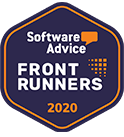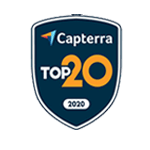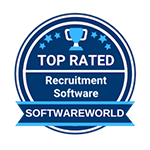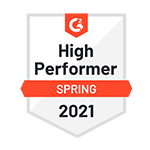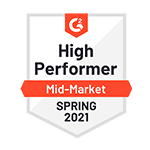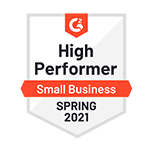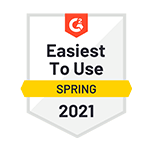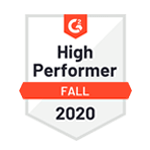In the current job market, the organizations that are utilizing an applicant tracking system are most probable to attract, identify and hire the top talent in no time. Whereas, the companies that do not leverage the new recruitment approaches face drags in achieving their recruitment goals. Hence today, the ATS friendly resumes have become important more than ever.
Provision of a recruiting software for your hiring process digitalizes and centralizes all of your recruiting data at a single platform. It also performs an initial screening of the received applications to point out the best potential candidates. These are only a few to mention all those functions that an ATS can do for you. Applicant tracking systems are very useful for improving the overall recruiting process. Moreover, it helps in alleviating the most critical issues concerning the hiring and talent acquisition activities.
Need for Automated Decision Making in HR
Applicant tracking systems are all about expediting the process. Sifting through hundreds of thousands of resumes for sorting out prospective candidates can be a time-consuming and tiresome activity. Applicant tracking system speeds up this procedure by identifying the resumes that comprise the required key skill sets and experiences.
According to a report, nearly 75% of the applicants are unable to get their resumes past the ATS screening. The screening procedure performs the task of cutting down a massive applicant pool to only a few candidates that the human hiring managers can evaluate rather more closely and effectively.
How to Create ATS Friendly Resumes?
Follow the tips below if you want to design and list yourself among the list of ATS friendly resumes:
-
Choose the right file type:
In contrast to the popular opinion, .pdf is not the most compatible file type for applicant tracking systems. Although, PDF file format is among the best formats at securing the design and format of the resumes, it yet may not suite all applicant tracking software. Ensure the utilization of desired/right file format for your resume. For instance, if the requested file format is .pdf, your uploaded resume must be a PDF document.
However, if the system has not listed any specific category of files compatible to use, try sticking to universal formats such as .doc or .docx. You can also use plain-text files as they are extremely compatible with most applicant tracking systems. Nonetheless, it goes with saying that you will enjoy limited formatting options with plain-text formats. The ATS friendly resumes are designed for two different recipients. These recipients include the robots that pre-screen the applications and human mangers who analyze the resumes that make it past the ATS. Therefore, the best file type to use for your resume is Word Document; it offers you a lot of formatting options with great appeal to the recruiters or hiring managers.
It is a common understanding that not all of the applicant tracking software have the ability to accurately read and parse information placed in the header/footer of a document. According to a recent study, most ATS(s) are incapable of identifying a section of the applicant’s contact information 25% of the time. You can easily avoid such errors by putting your crucial contact details in the body of your resume. (For example, your name, contact number, email address etc.)
-
Use keywords to optimize your resume:
One of the best ways to develop ATS friendly resumes is to incorporate keyword optimization. Use such keywords or rich marketing terms & phrases like proactive or ambitious that can represent your soft and hard skills. It also represents the proficiency you have gained over the years and make you a qualified candidate for the job. If you find yourself uncertain about the which keywords to use, you can pick a few of them from the job description of the open position. Moreover, you can compile few job postings for the same or similar role and easily extract the desired keywords. After this, use a word-cloud generator (Wordle, WordArt or Tagxedo) by copying and pasting the job description to find out the terms that frequently recur in your chosen positions. If you have those relevant qualifications or skills, then BOOM! those are the keywords you should be using.
When it’s regarding developing an ATS-optimized resume, you must take into consideration the overall frequency and placement of these keywords into your resume. Some of the applicant tracking systems analyze the credibility of your skills depending on the quantity of how many times a term has appeared in the resume (ideally use the term for two to three times all through your resume), while some other ATS systems allocate a calculated amount of experience for a specific skill depending on its placement throughout the resume. To create ATS friendly resumes, you need to optimize your resume keeping both systems in mind.
-
Avoid images, charts and other graphics:
Although images and graphics have an attractive appearance for the human eyes, however, resumes with inserted images rather appear as an obscured combination. They can get misplaced from your application after passing through an applicant tracking system. For example, if you have used an image or chart to represent your core skills, the recruiting software might not be able to read it. In case, you have used a cool graphic to label your name on your resume, there’s a high probability that the applicant tracking software might not be able to construe it rightly.
-
Create a precise resume:
If utilized properly, bullet points can be a great technique to highlight the achievements and qualifications on your resume. On the other hand, if you select an intricate character for your bullets, your key marketing points may get all jumbled up. Therefore, refrain from using fancy symbols when developing a bulleted list on your CV or resume. Instead, pick simple and plain choices for creating your resume. For instance, a solid circle, open circle, or a square, to make certain that your bullet points improve your resume. Try to avoid every redundant aspects of your resume that makes it unsuitable for applicant tracking systems.
-
Use a simple layout and hierarchy:
When it comes to the layout of your resume, the simpler you go, the better it is. Using a complex design for your resume not only confuses applicant tracking systems but also aggravates the recruiters. Therefore, the resumes should be so designed so to cater for specified information that is compliant to ATS(s) and is easily readable by machine.
-
Visible Representation
Last but not least, one of the most important strategy to land a desired job is to have a working LinkedIn profile. Your LinkedIn details should comprise of similar keywords to those in your resume. It will be most essential for you to make the most of your job search via LinkedIn recruiters. It will also showcase your consistency and persuade the recruiters to draw attention to your details.
If you’re looking for a competent recruiting software to answer all your recruitment needs, RecruitBPM is here for you. Moreover, we also offer a free demo of our applicant tracking system which you can access here.





